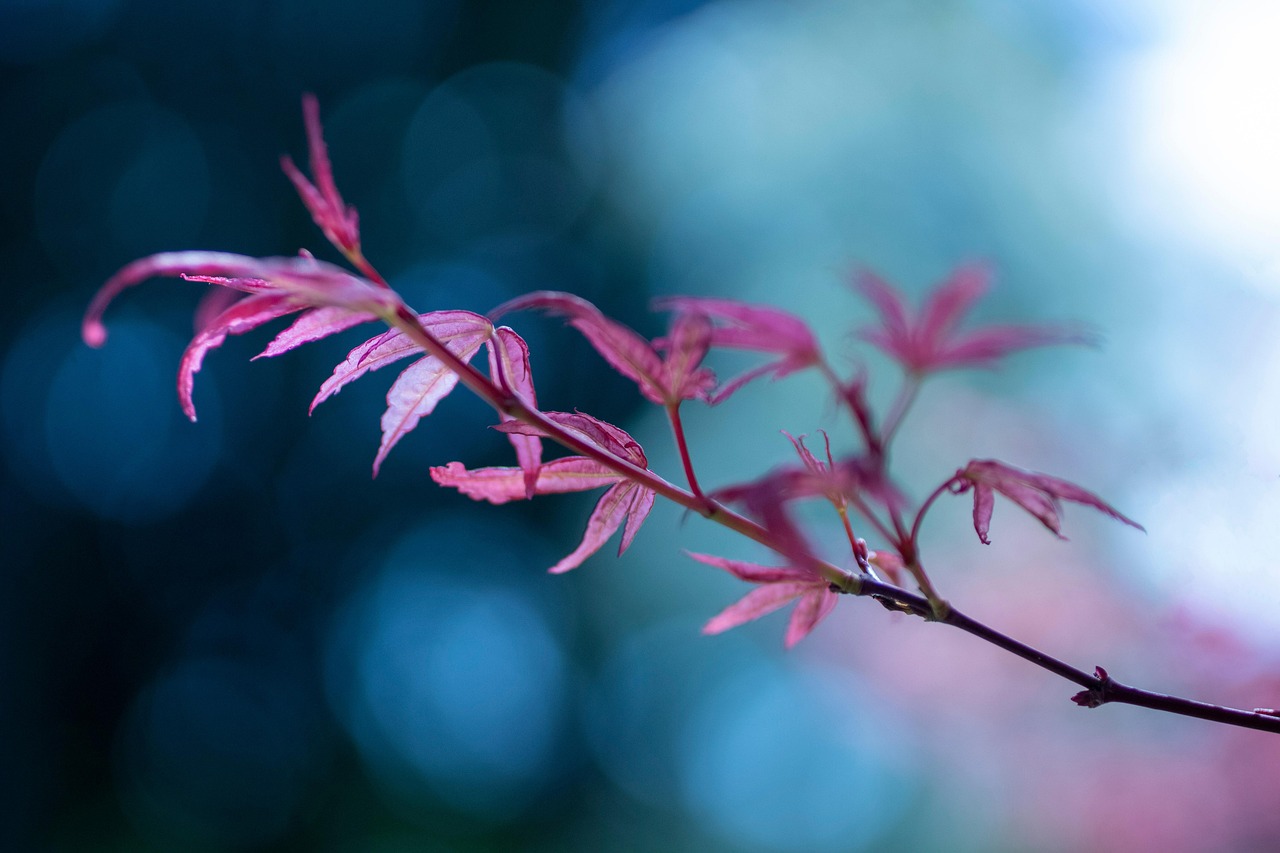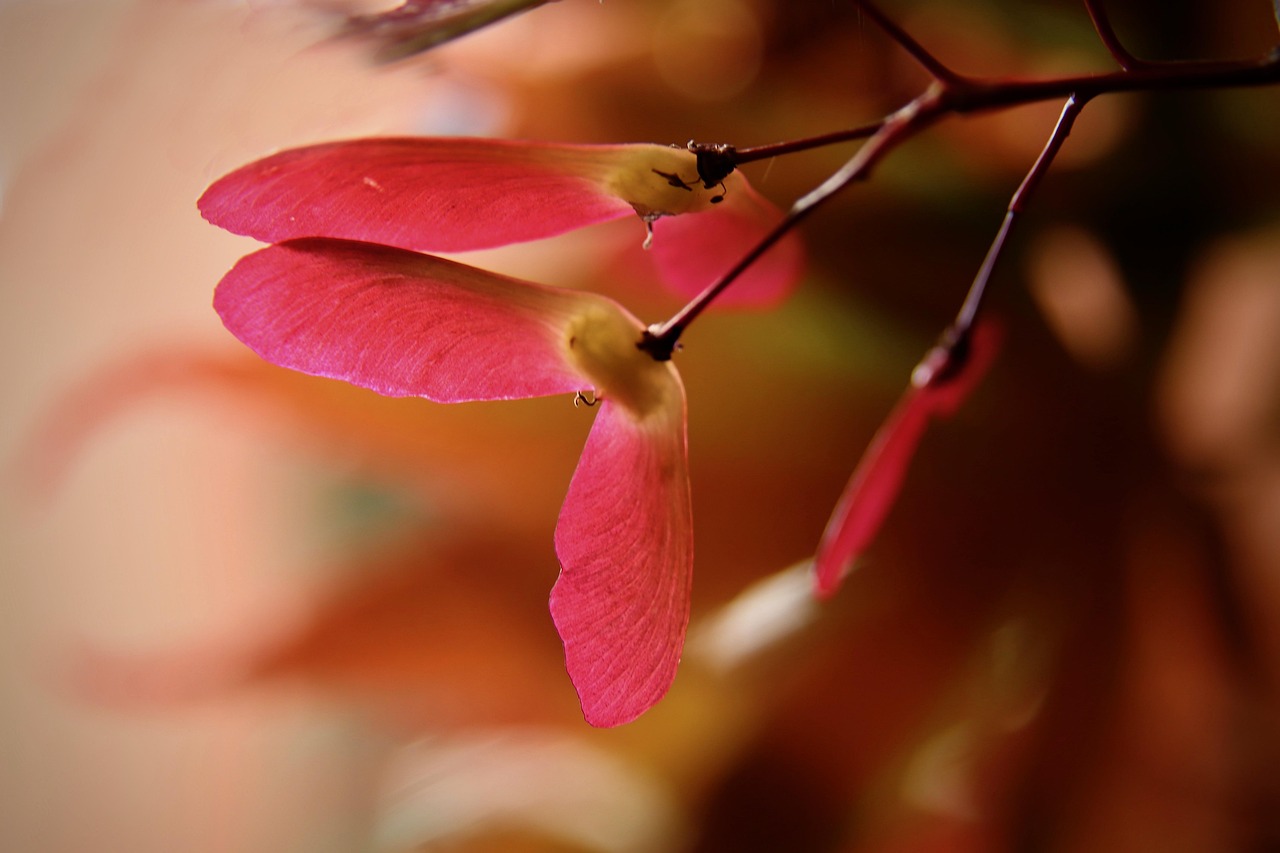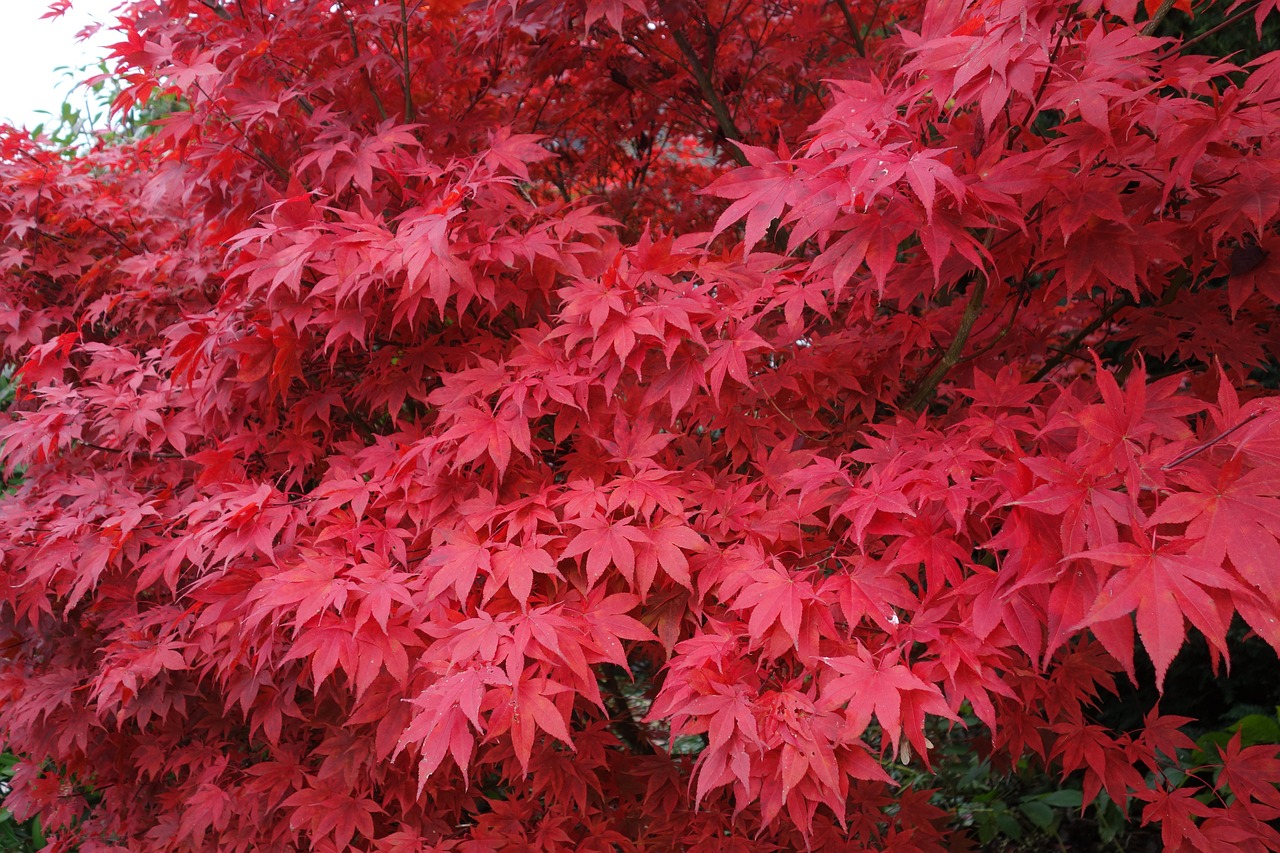Pruning Japanese maple trees enhances their beauty and promotes healthy growth, crucial for achieving the desired bonsai aesthetics. Proper techniques yield stunning, well-structured trees that highlight their delicate leaves and graceful forms.
Japanese maples (Acer palmatum) are beloved for their vibrant foliage and intricate branch structures. These trees can be transformed into captivating bonsai specimens through careful pruning. Understanding the principles of bonsai aesthetics is essential for any enthusiast looking to cultivate these beautiful plants. Pruning is not merely a task; it is an art that requires knowledge, patience, and precision.

Pruning serves multiple purposes when shaping a Japanese maple for bonsai. It helps maintain the tree’s size, encourages dense foliage, and promotes a balanced structure. Additionally, pruning allows for better air circulation and light penetration, which are vital for the health of the tree. The ideal time for pruning varies according to the season and specific growth stage of the tree.
Understanding the Growth Patterns
Before diving into pruning techniques, it is crucial to understand how Japanese maples grow. These trees exhibit two main types of growth: vegetative growth and reproductive growth. Vegetative growth refers to the development of new leaves and branches, while reproductive growth involves flower and seed production.
Japanese maples typically experience a burst of growth in spring, followed by slower growth in summer. Autumn brings beautiful color changes, while winter is a dormant period. Pruning during the appropriate seasons enhances the tree’s aesthetic appeal and overall health.

Essential Pruning Techniques
There are several techniques to consider when pruning Japanese maple trees for bonsai aesthetics. Each method has its benefits and application timing. Below are some essential techniques:
- Pinching: This technique involves removing the tips of new shoots with fingers or scissors. Pinching encourages bushier growth and helps maintain the desired shape.
- Thinning: Thinning involves selectively removing branches to improve light penetration and airflow within the tree’s canopy. It helps prevent overcrowding and allows for more balanced growth.
- Heading Back: This technique shortens long branches to encourage new growth from the remaining buds. It is particularly useful for controlling size and creating a more compact tree.
- Cleansing: This method includes removing dead or diseased wood from the tree. It helps maintain overall health and prevents pest infestations.
Timing Your Pruning
The timing of pruning greatly impacts the success of your bonsai Japanese maple. Pruning during the wrong season can lead to stress or damage to the tree. The following table summarizes the best times for different pruning techniques:
| Technique | Best Time | Notes |
|---|---|---|
| Pinching | Spring to Early Summer | Encourages bushy growth; avoid late summer pinching. |
| Thinning | Late Winter to Early Spring | Best done before new growth begins. |
| Heading Back | Late Winter | Promotes strong growth in spring. |
| Cleansing | Anytime | Remove dead or diseased wood as needed. |
Each pruning technique plays a role in shaping the overall aesthetics of the bonsai. By strategically planning when to prune, you can ensure optimal results. Remember that less is often more; over-pruning can lead to stress and hinder growth.

Common Mistakes to Avoid
When pruning Japanese maple trees for bonsai aesthetics, certain mistakes can hinder progress and damage the tree. Here are some common pitfalls to be mindful of:
- Pruning at the Wrong Time: Ensure you are familiar with the seasonal needs of your tree before pruning.
- Over-Pruning: Remove too much foliage or too many branches, leading to shock or stunted growth.
- Lack of Planning: Prune without a clear vision for the tree’s shape or structure.
- Poor Tool Maintenance: Use dull or dirty tools, which can damage branches or introduce disease.
By avoiding these mistakes, you set your Japanese maple on a path toward thriving as a beautiful bonsai specimen. Remember that each cut should be intentional, reflecting your vision for the final appearance of your tree.
Tools and Equipment for Pruning
Having the right tools is essential for effective pruning of Japanese maple trees. Proper equipment ensures clean cuts and minimizes stress on the tree. Below is a list of indispensable tools every bonsai enthusiast should have:

- Pruning Shears: These are vital for making clean cuts on small branches. Look for sharp, high-quality shears to avoid damaging the tree.
- Concave Cutters: Ideal for larger branches, concave cutters help create a clean cut that heals more quickly, reducing the risk of disease.
- Wire Cutters: Necessary for removing training wires without damaging the tree’s bark or branches.
- Saw: A small saw is useful for cutting bigger branches that shears cannot handle.
- Rubbing Alcohol: Use this for disinfecting tools before and after pruning to prevent the spread of disease.
- Gloves: Protect your hands while handling sharp tools and working with the tree.
Investing in high-quality tools will not only make the pruning process easier but also promote healthier growth in your Japanese maple. Always keep your tools clean and sharp to ensure the best results.
The Pruning Process
Understanding the steps involved in pruning Japanese maple trees will enhance your ability to shape them effectively. The following process outlines the key stages of pruning:
- Assess the Tree: Before making any cuts, examine the tree’s overall structure. Identify areas that need thinning or shaping.
- Plan Your Cuts: Decide which branches to remove based on your vision for the tree. Focus on creating a balanced structure.
- Start with Thinning: Begin by thinning out crowded areas to improve airflow and light exposure.
- Make Heading Cuts: Shorten long branches to promote new growth at desired points.
- Cleansing Cuts: Remove any dead or unhealthy wood to keep the tree healthy.
- Check Progress: Step back frequently to assess your work and ensure you are on track to achieve your desired shape.
This systematic approach to pruning helps you maintain focus and avoid over-pruning, leading to a healthier and more aesthetically pleasing bonsai tree. Remember to be patient; bonsai shaping is a gradual process that takes time.
Seasonal Considerations
The seasonality of pruning plays a significant role in the health of Japanese maple trees. Different times of the year present unique opportunities and challenges. Here’s a closer look at how seasonal changes affect pruning:
Spring Pruning
Spring is the most active growth period for Japanese maples. Pruning during this time can stimulate new growth and enhance foliage density. However, it is important to wait until after the last frost to avoid damaging tender new shoots.
Summer Pruning
Summer offers a chance to fine-tune your tree’s shape. Pinching back new growth can promote denser foliage while maintaining size. Avoid heavy pruning in summer, as this can stress the tree during its active growth phase.
Autumn Pruning
Autumn is typically not recommended for major pruning, as trees begin to prepare for dormancy. However, light thinning and removing dead branches can be beneficial. This allows the tree to focus its energy on root development over winter.
Winter Pruning
Winter is an excellent time for more extensive pruning. During dormancy, trees are less stressed and can recover more effectively from larger cuts. However, avoid pruning during extreme cold spells, as this can harm the tree.
| Season | Pruning Focus | Recommended Actions |
|---|---|---|
| Spring | Active Growth | Pinch and thin branches after last frost. |
| Summer | Shaping | Lightly pinch and manage growth; avoid heavy cuts. |
| Autumn | Dormancy Preparation | Light thinning; remove dead wood only. |
| Winter | Dormant Tree | Extensive pruning; focus on shaping and health. |
By aligning your pruning efforts with seasonal changes, you can enhance the health and beauty of your Japanese maple bonsai. Each season brings unique opportunities to refine your techniques and achieve stunning aesthetics.
Caring for Your Tree Post-Pruning
The care provided after pruning is just as crucial as the pruning itself. Proper post-pruning care helps the tree recover quickly and thrive. Here are some key steps to follow after pruning:
- Watering: Ensure the tree receives adequate water after pruning, as it may require extra hydration to support new growth.
- Nourishment: Fertilize with a balanced fertilizer designed for bonsai trees to encourage healthy growth.
- Avoid Stress: Minimize disturbances around the tree during its recovery period, such as heavy winds or direct sunlight exposure.
- Monitor Health: Regularly check for signs of stress or disease in the weeks following pruning. Prompt action can prevent further issues.
Caring for your Japanese maple post-pruning is essential for ensuring that it not only survives but thrives in its new shape. Paying attention to these details will help you cultivate a stunning bonsai specimen over time.
Pest and Disease Management
Maintaining the health of your Japanese maple bonsai requires vigilant pest and disease management. These trees, while generally hardy, can be susceptible to various issues that may arise during their growth cycle. Early detection and treatment are key to preserving the beauty of your bonsai.
Common Pests
Several pests can affect Japanese maple trees. Being aware of these pests helps you take preventive measures. Here are some common pests to watch for:
- Aphids: Tiny insects that suck sap from leaves, leading to curling and yellowing. They can reproduce quickly, so prompt action is necessary.
- Spider Mites: These pests create fine webs on the tree and cause leaf discoloration and stippling. They thrive in dry conditions.
- Scale Insects: These pests appear as small bumps on branches and leaves. They can weaken the tree by sucking its sap.
- Leafhoppers: They feed on sap and can cause leaf damage. Their presence may result in reduced vigor.
Disease Risks
In addition to pests, Japanese maples are also susceptible to various diseases. Understanding these risks allows for better management:
- Powdery Mildew: A fungal disease characterized by white, powdery spots on leaves. It thrives in humid conditions and can inhibit growth.
- Root Rot: Caused by overwatering or poor drainage, this condition leads to wilting and eventual death of the tree.
- Canker Diseases: Fungal infections that cause sunken areas on branches and can lead to dieback if not addressed.
- Verticillium Wilt: A soil-borne fungus that affects vascular tissue, leading to wilting and yellowing leaves.
Preventive Measures
Preventing pests and diseases is essential for maintaining a healthy bonsai. Here are some strategies to consider:
- Proper Watering: Avoid overwatering to prevent root rot. Ensure good drainage in the potting medium.
- Regular Inspections: Frequently check your tree for signs of pests or disease. Early detection is crucial.
- Maintain Air Circulation: Space out branches to allow for airflow, reducing humidity around the foliage.
- Healthy Soil: Use high-quality soil that provides adequate drainage and nutrients for your tree.
Treatment Options
If you notice pests or diseases on your Japanese maple, prompt action is essential. Here are some treatment options:
Pest Control
The following treatments can help manage pest infestations effectively:
- Insecticidal Soap: This eco-friendly option suffocates soft-bodied insects like aphids and spider mites without harming beneficial insects.
- Nematicides: Use these chemicals with caution to treat soil-borne pests like root-knot nematodes.
- Neem Oil: A natural pesticide that disrupts the life cycle of many common pests while being safe for plants.
- Horticultural Oils: These oils can smother insects and are effective against scale insects and other pests.
Disease Management
Treating diseases in Japanese maples often requires different approaches:
- Fungicides: Use fungicides specifically designed for treating powdery mildew and other fungal diseases.
- Cultural Practices: Implement practices such as removing infected leaves and branches to minimize disease spread.
- Soil Health Improvement: Ensure proper soil amendments to promote healthy root systems, which can help combat root rot.
- Pruning Infected Areas: Remove any affected parts of the tree promptly to prevent further infection.
Creating the Ideal Environment
The environment in which your Japanese maple bonsai is kept plays a significant role in its health. Creating an ideal environment involves considering various factors including light, humidity, and temperature.
Light Requirements
Japanese maples thrive in bright, indirect sunlight. Here are some tips for providing adequate light:
- Avoid Direct Sunlight: Direct afternoon sun can scorch the delicate leaves. Instead, opt for filtered light or partial shade.
- Rotate Your Tree: Regularly rotating your bonsai ensures even light distribution, promoting balanced growth.
- Indoor vs Outdoor Placement: If grown indoors, place near a window that receives ample indirect sunlight. Outdoor trees should be protected from harsh midday sun.
Humidity Levels
Japanese maples benefit from higher humidity levels. Maintaining suitable humidity can be achieved through the following methods:
- Misting: Lightly misting the leaves can increase humidity around the tree, especially in dry indoor environments.
- Humidity Trays: Place a shallow tray filled with water and pebbles under the bonsai pot to enhance local humidity levels.
- Avoid Dry Heating Sources: Keep trees away from heaters or air conditioning units which can dry out the air significantly.
Temperature Considerations
The ideal temperature for Japanese maples varies by season, but generally, they prefer moderate conditions:
- Avoid Extreme Temperatures: Protect your bonsai from freezing temperatures in winter and extreme heat during summer months.
- Create Shade in Hot Weather: Use shade cloths or other means to shield your bonsai during intense heat conditions.
- Dormancy Periods: During winter dormancy, ensure that temperatures remain above freezing to protect the roots.
A well-maintained environment contributes significantly to the health and aesthetic appeal of your Japanese maple bonsai. By addressing these environmental factors, you can support robust growth and longevity for your cherished tree.
Enhancing Aesthetics Through Design Techniques
In addition to pruning and maintenance, employing design techniques can significantly enhance the aesthetic appeal of your Japanese maple bonsai. These techniques focus on the overall presentation and style of the tree, which can make a substantial difference in its visual impact.
Choosing the Right Container
The container you select for your bonsai can greatly influence its appearance. Here are some considerations:
- Size: Choose a pot that is proportional to the size of your tree. A pot that is too large can overwhelm the tree, while one that is too small may restrict growth.
- Shape: Consider the style of your bonsai when selecting the pot. Rectangular pots work well for formal styles, while round pots suit more informal styles.
- Material: Traditional clay pots are popular for their breathability and aesthetics. Glazed pots can add color and shine, enhancing the overall look.
- Drainage: Ensure that the pot has adequate drainage holes to prevent waterlogging, which can harm the roots.
Wiring Techniques
Wiring is an essential technique in bonsai cultivation, allowing you to shape and position branches as desired. Consider these tips:
- Selecting Wire: Use aluminum or copper wire, as both are malleable and can hold their shape well.
- Applying Wire: Wrap the wire around branches gently, ensuring it does not cut into the bark. Start from the trunk and work your way out to the tips of the branches.
- Timing: Wire during early spring or late winter when the tree is dormant. Remove the wire before it begins to cut into the bark as the tree grows.
Creating Balance and Flow
A well-designed bonsai should exhibit balance and flow. Consider the following aspects:
- Asymmetry: Aim for an asymmetrical design that mimics natural growth patterns. This adds interest and realism to your bonsai.
- Negative Space: Allow for negative space within the design to create visual breathing room. This enhances the overall composition.
- Height Variation: Incorporate varying heights in branches to create depth and a more dynamic appearance.
Caring for Your Bonsai Long-Term
Long-term care for your Japanese maple bonsai involves consistent attention to both aesthetic and health aspects. Here are some key practices to ensure your tree remains vibrant over time:
- Regular Pruning: Continue to prune throughout the growing season to maintain shape and encourage dense foliage.
- Soil Maintenance: Refresh or replace soil every couple of years to ensure proper drainage and nutrient availability.
- Seasonal Adjustments: Be prepared to adjust watering and feeding schedules based on seasonal changes in temperature and humidity.
- Repotting: Repot your bonsai every two to three years or as needed to promote healthy root growth.
Final Thoughts
Pruning Japanese maple trees for bonsai aesthetics is an intricate process that combines art and horticulture. By mastering pruning techniques, understanding seasonal care, and implementing design strategies, you can create a stunning bonsai that showcases the beauty of this exquisite tree species.
The journey of cultivating a Japanese maple bonsai is both rewarding and educational. It requires patience, creativity, and dedication. As you refine your skills, you will develop a deeper appreciation for these trees and gain insight into their unique characteristics.
If you commit to ongoing learning and care, your Japanese maple bonsai will not only thrive but also become a cherished centerpiece in your collection. Embrace the art of bonsai, and enjoy the beauty that unfolds as you nurture your tree through its life stages.
Ultimately, each bonsai tells a story through its design and growth. Your Japanese maple will reflect your personal style and philosophy as a gardener, making every effort worthwhile in the pursuit of perfection.
